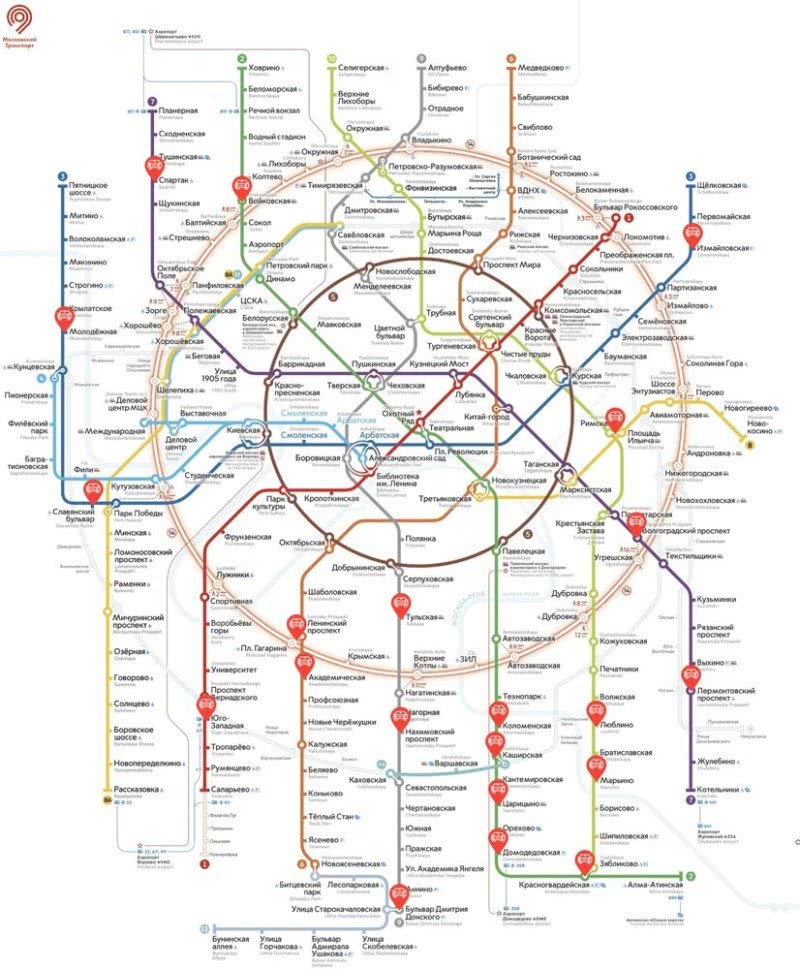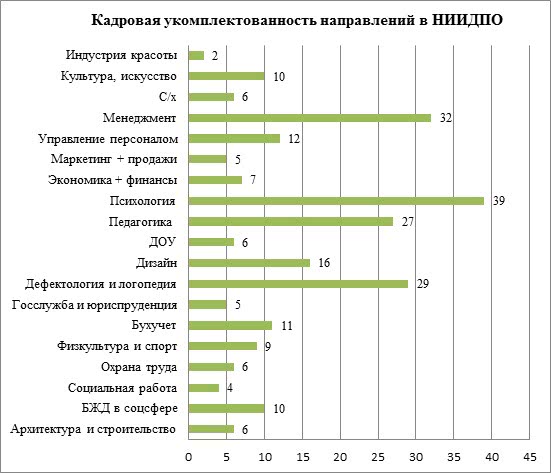Best practices
Animations can greatly improve an interface’s UX, but it’s important to follow some guidelines to not overdo it and deteriorate the user experience on your web-things. Following the following rules should provide a good start.
Meaningful animations
You should avoid animating an element just for the sake of it. Keep in mind that animations should make an intention clear. Animations like attention seekers (bounce, flash, pulse, etc) should be used to bring the user’s attention to something special in your interface and not only as a way to bring «flashiness» to it.
Entrances and exit animations should be used to orientate what is happening in the interface, clearly signaling that it’s transitioning into a new state.
It doesn’t mean that you should avoid adding playfulness to the interface, just be sure that the animations are not getting in the way of your user and that the page’s performance is not affected by an exaggerated use of animations.
Don’t animate large elements
Avoid it as it won’t bring much value to the user and will probably only cause confusion. Besides that, there is a good chance that the animations will be junky, culminating in bad UX.
Don’t animate root elements
Animating the or tags is possible, but you should avoid it. There were some reports pointing out that this could trigger some weird browser bugs. Besides, making the whole page bounce would hardly provide good value to your UX. If you indeed need this sort of effect, wrap your page in an element and animate it, like this:
Infinite animations should be avoided
Even though Animate.css provides utility classes for repeating animations, including an infinite one, you should avoid endless animations. It will just distract your users and might annoy a good slice of them. So, use it wisely!
Mind the initial and final state of your elements
All the Animate.css animations include a CSS property called , which controls the states of an element before and after animation. You can read more about it here. Animate.css defaults to , but you can change it to suit your needs.
Don’t disable the media query
Since version 3.7.0 Animate.css supports the media query which disables animations based on the OS system’s preference on supporting browsers (most current browsers support it). This is a critical accessibility feature and should never be disabled! This is built into browsers to help people with vestibular and seizure disorders. You can read more about it here. If your web-thing needs the animations to function, warn users, but don’t disable the feature. You can do it easily with CSS only. Here’s a simple example:
See the Pen
Prefers-reduce-motion media query by Elton Mesquita (@eltonmesquita)
on CodePen.
2 Adobe Animate CC Free Alternatives
If you are not happy with Adobe Animate free, for instance, it works too slowly or ineffectively, I gathered free alternatives that have the same functionality and features. You can download and use them without paying a dollar.
1. KoolMoves

Pros+
- Various interactive and informative tutorials
- User-oriented
- Numerous effects and tools
Cons-
- No advanced audio and video Flash capabilities
- Keyboard shortcuts cannot be adjusted
This is an excellent alternative to Adobe Flash CC, as the popularity of Flash is very strong nowadays. If you are looking for a program that can create unique and extraordinary content, KoolMoves is a great option.
Of course, it is impossible to create such sites as Yahoo.com in a matter of minutes. KoolMoves is an excellent introduction to Flash capabilities. It allows you to bring in graphic pictures, create beautiful animations, interfaces and web pages, using an intuitive interface.
KoolMoves toolbox features an amazingly large set of functions. You can work with text and animation effects, import files, tween and add MP3 or WAV files to your projects.
2. Moho Pro 12

Pros+
- Helpful tutorials and support
- The possibility to switch between 2 modes – beginner and advanced
- A wide variety of pre-made content
- Bone-rigging system
- Capable of uploading files directly to YouTube
Cons-
- Unappealing interface
- Requires time to learn
Moho Pro 12 is animation software for creating cartoons, 2D movies or cut-out animations, drawing backgrounds, adding text or audio to projects and, if necessary, uploading them online.
Moho Pro 12 has features similar to Adobe Photoshop, Adobe Illustrator and Adobe Flash. Moho Pro 12 is rather difficult to learn, but it will entertain you for hours.
Thanks to the informative tutorial, you’ll be able to learn how to work with illustration and basic animations. Moreover, you can experiment with the characters and sounds from Moho Pro 12 library to improve your skills.
The software has an intuitive workflow because Moho Pro 12 features widespread techniques: working with layers, a timeline, vector images (light and malleable) and a simple and rich palette.
5 Reasons to Stop Using Pirated Flash Animation Software
There is no legal way to get Adobe Animate free download. That is why many users are looking for pirated versions. Some of them don’t realize the dangers of using such kind of softwares.
So you should know about possible consequences and hidden dangers of downloading cracked programs.
It is Illegal
Everybody knows that it is illegal but not every user realizes the possible consequences. If you are the USA or UK citizen, you may find a policeman at your doorstep or your case may be sent to court.
You cannot hide your internet activity and what you download from ISP. Moreover, the software developers more often put flags inside their programs, so they know whether you use licensed software or not.
Even a small cracked application you have downloaded on the Web may result in big problems.
You Don’t Get any Support
Modern software requires more specialized online support. If you download Adobe Flash Animation free and it doesn’t properly work, you cannot call customer support.
Your software doesn’t have any license, and if you have some problems, there is no one you can approach.
In addition, a lot of programs requires cooperation with their host server to work correctly each time you use them. Since you are using fake software, you don’t have any rights for technical support.
Trial Versions Are Available
Usually, you can try Adobe Animate free before purchasing a license. 14-30 days are enough to use all its functions and understand whether this program is worth the money the company is asking for it.
If the software seems too expensive for you, no one is making you pay for it. This type of market pressure has led to price reduction for software and applications. If the program is really worth its money, you will definitely purchase it.
It Won’t Upgrade
Adobe Flash Animator requires upgrading to improve its performance. Each program we use often connects to the developer’s host server.
Due to this, the software can update essential files and fixes. If there is no possibility to update the program, bugs and lags will soon appear, and it may even work unstably. If you buy software, it means having a license that guarantees future updates.
Выполнение нескольких анимаций
При одновременном вызове нескольких эффектов, применительно к одному элементу, их выполнение будет происходить не одновременно, а поочередно. Например при выполнении следующих команд:
$("#my-div").animate({height "hide"}, 1000);
$("#my-div").animate({height "show"}, 1000);
элемент с идентификатором my-div, в начале будет плавно исчезать с экрана, а затем начнет плавно появляться вновь. Однако, анимации, заданные на разных элементах, будут выполняться одновременно:
$("#my-div-1").animate({height "hide"}, 1000);
$("#my-div-2").animate({height "show"}, 1000);
Параметр properties
Задается объектом, в формате css-свойство:значение. Это очень похоже на задание группы параметров в методе .css(), однако, properties имеет более широкий диапазон типов значений. Они могут быть заданы не только в виде привычных единиц: чисел, пикселей, процентов и др., но еще и относительно: {height:"+=30", left:"-=40"} (увеличит высоту на 30 пикселей и сместит вправо на 40). Кроме того, можно задавать значения "hide", "show", "toggle", которые скроют, покажут или изменят видимость элемента на противоположную, за счет параметра, к которому они применены. Например
$('div').animate(
{
opacity "hide",
height "hide"
},
5000);
Скроет div-элементы, за счет уменьшения прозрачности и уменьшения высоты (сворачиванием) элемента.
Замечание 1: Отметим, что в параметре properties можно указывать только те css-свойства, которые задаются с помощью числовых значений. Например, свойство background-color использовать не следует.
Замечание 2: Величины, которые в css пишутся с использованием дефиса, должны быть указаны без него (не margin-left, а marginLeft).
Installation and usage
Installing
Install with npm:
Or install with Yarn (this will only work with appropriate tooling like Webpack, Parcel, etc. If you are not using any tool for packing or bundling your code, you can simply use the CDN method below):
Import it into your file:
Or add it directly to your webpage using a CDN:
Basic usage
After installing Animate.css, add the class to an element, along with any of the (don’t forget the prefix!):
That’s it! You’ve got a CSS animated element. Super!
Using
Even though the library provides you a few helper classes like the class to get you up running quickly, you can directly use the provided animations . This provides a flexible way to use Animate.css with your current projects without having to refactor your HTML code.
Example:
Be aware that some animations are dependent on the property set on the animation’s class. Changing or not declaring it might lead to unexpected results.
CSS Custom Properties (CSS Variables)
Since version 4, Animate.css uses custom properties (also known as CSS variables) to define the animation’s duration, delay, and iterations. This makes Animate.css very flexible and customizable. Need to change an animation duration? Just set a new value globally or locally.
Example:
Custom properties also make it easy to change all your animation’s time-constrained properties on the fly. It means that you can have a slow-motion or time-lapse effect with a javascript one-liner:
Even though some aging browsers do not support custom properties, Animate.css provides a proper fallback, widening its support for any browser that supports CSS animations.
Скачайте Adobe Animate на русском языке бесплатно для Windows
| Версия | Платформа | Язык | Размер | Формат | Загрузка |
|---|---|---|---|---|---|
|
Adobe Animate CC 2018 |
Windows |
Русский | 1703.8MB | .exe |
Скачать |
|
Adobe Animate CC 2017 |
Windows | Русский | 902.4MB | .exe |
Скачать |
Обзор Adobe Animate
Adobe Animate (Адобе анимейт) – профессиональный редактор для создания анимации, с мощной инструментальной базой и библиотеками готовых объектов. Позволяет создавать ролики для сайтов, анимированные блоки для телепрограмм, короткометражные мультфильмы и другие типы мультимедийного контента. Программный продукт является усовершенствованной версией Adobe Flash, адаптирован для 64-битных платформ, работающих под управлением Windows.
Возможности Adobe Animate
Adobe Animate позволяет создавать и редактировать мультимедийные проекты, содержащие статичные и динамические картинки, звуковые дорожки и видеоряды. Поддерживает растровую и векторную графику, работу с двумерными и трехмерными изображениями. Встроенные инструменты позволяют вносить изменения в объекты, временная шкала используется для редактирования анимации.
Основные возможности приложения:
- • рисование изображений;
- • монтаж видео;
- • импорт картинок и звука;
- • управление движением объектов;
- • прорисовка заднего фона;
- • добавление эффектов;
- • работа с камерой.
Редактор обеспечивает прорисовку вдоль кривых точных векторных контуров, синхронизацию звука с анимацией и просмотр проектов в режиме реального времени. Предусмотрены опции добавления новых кистей, экспорт видеоизображений в 4К, преобразование проекта в HTML5 Canvas и другие возможности.
Преимущества Adobe Animate
По сравнению с Adobe Flash, редактор обладает расширенной функциональностью. Он позволяет поворачивать холст на угол до 360 градусов, использовать шаблоны HTML5 Canvas и графические эскизы, через сервис TypeKit получать доступ к шрифтам (более тысячи разновидностей). Предусмотрена опция присвоения имен цветовым оттенкам, за счет которой можно быстро изменять выбранный цвет во всей композиции. Новые инструменты можно загружать из интернета или создавать собственными силами. Среди преимуществ программы:
- • наличие встроенной виртуальной камеры;
- • доступ к библиотекам;
- • экспорт в различные форматы;
- • богатый набор инструментов для работы с объектами;
- • преобразование существующих и создание новых кистей;
- • двунаправленная потоковая трансляция аудио и видео.
Созданные проекты могут выводиться в высоком качестве на экраны стационарных компьютеров, ноутбуков и телевизоров. Существует возможность их оптимизации к любым дисплеям путем изменения разрешения и размера.
В последней версии Adobe Animate CC 2018, вышедшей в 2017 году, добавлены новые кисти для работы с векторными изображениями, которые позволяют наносить штрихи, изменять их направление и масштаб без потери качества.
Скриншоты
Похожие программы
Sony Vegas Pro — создание многодорожечных видео и аудио записей
Camtasia Studio — программа для захвата видеоизображения с монитора компьютера
Adobe Premiere Pro — программное обеспечение для нелинейного видеомонтажа
Fraps
VirtualDub
Freemake Video Converter
DivX — набор кодеков и утилит для воспроизведения аудио и видео
Adobe After Effects
Pinnacle Studio — программа для обработки видео файлов
Movavi Video Editor — утилита для монтажа видеофайлов
iMovie — бесплатный видеоредактор от компании Apple
Format Factory
CyberLink PowerDirector — видеоредактор с возможностью захвата видео с внешних источников
Corel VideoStudio — профессиональный видеоредактор от компании Corel
Adobe Animate
Avidemux — для создания новых и обработки готовых видео
Edius — программное обеспечение для нелинейного монтажа видео
Daum PotPlayer — плеер с поддержкой всех мультимедийных форматов
ФотоШОУ PRO — программа для создания из фотографий видеороликов и слайд-шоу
Shortcut
HyperCam
VideoPad Video Editor — частично бесплатный видеоредактор
Proshow Producer — условно-бесплатная программа для создания слайд-шоу
Free Video Editor — бесплатный видео редактор для нелинейного видео монтажа
Wondershare Filmora — условно-бесплатная программа для работы с видеофайлами
OBS Studio
Zune
Аудио | Видео программы
Графические программы
Microsoft Office
Игры
Интернет программы
Диски и Файлы
Gotchas
You can’t animate inline elements
Even though some browsers can animate inline elements, this goes against the CSS animation specs and will break on some browsers or eventually cease to work. Always animate block or inline-block level elements (grid and flex containers and children are block-level elements too). You can set an element to when animating an inline-level element.
Overflow
Most of the Animate.css animations will move elements across the screen and might create scrollbars on your web-thing. This is manageable using the property. There’s no recipe to when and where to use it, but the basic idea is to use it in the parent holding the animated element. It’s up to you to figure out when and how to use it, this guide can help you understand it.
CSS Tutorial
CSS HOMECSS IntroductionCSS SyntaxCSS SelectorsCSS How ToCSS CommentsCSS Colors
Colors
RGB
HEX
HSL
CSS Backgrounds
Background Color
Background Image
Background Repeat
Background Attachment
Background Shorthand
CSS Borders
Borders
Border Width
Border Color
Border Sides
Border Shorthand
Rounded Borders
CSS Margins
Margins
Margin Collapse
CSS PaddingCSS Height/WidthCSS Box ModelCSS Outline
Outline
Outline Width
Outline Color
Outline Shorthand
Outline Offset
CSS Text
Text Color
Text Alignment
Text Decoration
Text Transformation
Text Spacing
Text Shadow
CSS Fonts
Font Family
Font Web Safe
Font Fallbacks
Font Style
Font Size
Font Google
Font Pairings
Font Shorthand
CSS IconsCSS LinksCSS ListsCSS Tables
Table Borders
Table Size
Table Alignment
Table Style
Table Responsive
CSS DisplayCSS Max-widthCSS PositionCSS OverflowCSS Float
Float
Clear
Float Examples
CSS Inline-blockCSS AlignCSS CombinatorsCSS Pseudo-classCSS Pseudo-elementCSS OpacityCSS Navigation Bar
Navbar
Vertical Navbar
Horizontal Navbar
CSS DropdownsCSS Image GalleryCSS Image SpritesCSS Attr SelectorsCSS FormsCSS CountersCSS Website LayoutCSS UnitsCSS SpecificityCSS !important
Параметр easing
Этот параметр определяет динамику выполнения анимации — будет ли она проходить с замедлением, ускорением, равномерно или как то еще. Параметр easing задают с помощью функции. В стандартном jQuery доступны лишь две такие функции: 'linear' и 'swing' (для равномерной анимации и анимации с ускорением). По умолчанию, easing равняется 'swing'. Другие варианты можно найти в плагинах, например, jQuery UI предоставляет более 30 новых динамик.
Существует возможность задавать разные значения easing для разных css-свойств, при выполнении одной анимации. Для этого нужно воспользоваться вторым вариантом функции animate() и задать опцию specialEasing. Например:
$('#clickme').click(function() {
$('#book').animate({
opacity 'toggle',
height 'toggle'
}, {
duration 5000,
specialEasing {
opacity 'linear',
height 'swing'
}
});
});
в этом случае изменение прозрачности будет происходить равномерно (linear), а высота будет изменяться с разгоном в начале и небольшим торможением в конце (swing).
Syntax
(selector).animate({styles},speed,easing,callback)
| Parameter | Description |
|---|---|
| styles | Required. Specifies one or more CSS properties/values to animate.
Note: The property names must be camel-cased when used with the animate() method: You will need to Properties that can be animated:
Only numeric values can be animated (like «margin:30px»). String values cannot be animated (like «background-color:red»), except for the strings «show», «hide» and «toggle». These values allow hiding and showing the animated element. |
| speed | Optional. Specifies the speed of the animation. Default value is 400 milliseconds
Possible values:
|
| easing | Optional. Specifies the speed of the element in different points of the animation. Default value is «swing». Possible values:
Tip: More easing functions are available in external plugins. |
| callback | Optional. A function to be executed after the animation completes. To learn more about callback, please read our jQuery Callback chapter |
The @keyframes Rule
When you specify CSS styles inside the
rule, the animation will gradually change from the current style to the new style
at certain times.
To get an animation to work, you must bind the animation to an element.
The following example binds the «example» animation to the <div> element.
The animation will last for 4 seconds, and it will gradually change the
background-color of the <div> element from «red» to «yellow»:
Example
/* The animation code */
@keyframes example {
from {background-color: red;}
to {background-color: yellow;}
}/* The element to apply the animation to */
div { width: 100px; height: 100px;
background-color: red;
animation-name: example; animation-duration: 4s;
}
Note: The property
defines how long an animation should take to complete. If the property is not specified,
no animation will occur, because
the default value is 0s (0 seconds).
In the example above we have specified when the style will change by using
the keywords «from» and «to» (which represents 0% (start) and 100% (complete)).
It is also possible to use percent. By using percent, you can add as many
style changes as you like.
The following example will change the background-color of the <div>
element when the animation is 25% complete, 50% complete, and again when the animation is 100% complete:
Example
/* The animation code */@keyframes example
{
0% {background-color: red;}
25% {background-color: yellow;}
50% {background-color: blue;}
100% {background-color: green;}
}/* The element to apply the animation to */div {
width: 100px; height: 100px; background-color: red; animation-name: example; animation-duration: 4s;}
The following example will change both the background-color and the position of the <div>
element when the animation is 25% complete, 50% complete, and again when the animation is 100% complete:
Example
/* The animation code */@keyframes example
{
0% {background-color:red; left:0px; top:0px;}
25% {background-color:yellow; left:200px; top:0px;}
50% {background-color:blue; left:200px; top:200px;}
75% {background-color:green; left:0px; top:200px;}
100% {background-color:red; left:0px; top:0px;}
}/* The element to apply the animation to */div {
width: 100px; height: 100px;
position: relative; background-color: red; animation-name: example; animation-duration: 4s;}
FAQ
Every registered Adobe user can get trial versions of any Creative Cloud App. Animate is not an exception. Just enter your Adobe ID, password and download a free trial from the Creative Cloud apps catalog.
First of all, go to the Creative Cloud apps catalog. Log in, enter your Adobe ID and password. Find Adobe Animate and download the program to your computer. If you are interested in installing previous releases or looking for Adobe Animate download updates, check Download creative cloud apps catalog.
It is possible to use Animate and other Adobe products only on two computers. If you want to install software to more than two PCs, it is necessary to deactivate the program on one of your desktops.
How to apply layer depth to my Adobe animation?
Animate has an advanced layer feature which you can use to add layer depth to your timeline layers. It is possible to change the depth of a layer and animate it.
How to create animation without writing code?
If you create animations for HTML5 canvas, you can use the actions code wizard. In this case, you don’t have to write any code. Learn how to use the actions code wizard in Animate.
How to install MXP and ZXP file extensions in Adobe animation software?
There are two options of installing MXP and ZXP file extensions: you can install them as add-ons using the Manage Extensions utility or with the help of the command line. Check how to install extensions in Animate and find tips that will help you fix any issues.
Урок №9 (как зациклить анимацию)
В девятом уроке по Adobe Animate я научу вас зацикливать отдельные фрагменты анимации, с помощью скрипта gotoAndPlay (что переводится как перейти и играть).

Закрепляем материал урока:
- Скрипт (gotoAndPlay) прописывается в ключевом кадре анимированного слоя, в нём указывается номер другого кадра, на который нужно сделать переход;
- Для корректной работы скрипта (gotoAndPlay), анимацию слоя следует преобразовать в покадровую;
- Для записи команды перехода на цыкал, нужно нажать клавишу F9 тем самым открыв окно действий и в нём прописать строчку (gotoAndPlay), а в скобках указать кадр, на который нужно сделать переход. Закрываем окно и жмём сочетание клавиш Alt+Enter, теперь анимация зациклена и будет непрерывно играть.
- Чтоб ограничить длительность анимации, например пятью секундами, откройте -“Файл/Экспорт/Экспорт видео”, установите галочку напротив “Остановить экспорт по истечению” и укажите время в секундах, установив значение – 5.
Скачать урок urok_9.fla
Migration from v3.x and under
Animate.css v4 brought some improvements, improved animations, and new animations, which makes it worth upgrading. However, it also comes with a breaking change: we have added a prefix for all of the Animate.css classes — defaulting to — so a direct migration is impossible.
But fear not! Although the default build, , brings the prefix we also provide the file which brings no prefix at all, like the previous versions (3.x and under).
If you’re using a bundler, update your import:
from:
to
Notice that depending on your project’s configuration, this might change a bit.
In case of using a CDN, update the link in your HTML:
from:
to
In the case of a new project, it’s highly recommended to use the default prefixed version as it’ll make sure that you’ll hardly have classes conflicting with your project. Besides, in later versions, we might decide to discontinue the file.
Синтаксис
var animation = element.animate(keyframes, options);
-
Массив объектов ключевых кадров, либо объект ключевого кадра, свойства которого являются массивами значений для итерации. Смотрите Keyframe Formats для получения подробной информации.
- Целое число, представляющее продолжительность анимации (в миллисекундах), или объект, содержащий одно или более временных свойств.
-
- Свойство уникальное для : , с помощью которого можно ссылаться на анимацию.
- (en-US) Необязательный
- Число миллисекунд для задержки начала анимации. По умолчанию .
- (en-US) Необязательный
- Указывает направление анимации. Она может выполняться вперёд (), назад (), переключать направление после каждой итерации (), или работать назад и переключать после каждой итерации (). По умолчанию .
- (en-US) Необязательный
- Число миллисекунд, в течении которых выполняется каждая итерация анимации. По умолчанию 0. Хотя это свойство технически необязательное, имейте ввиду, что ваша анимация не будет запущена, если это значение равно .
- (en-US) Необязательный
- Скорость изменения анимации с течением времени. Принимает заранее определённые значения , , , , и , или кастомное со значением типа . По умолчанию .
- (en-US) Необязательный
- Число миллисекунд задержки после окончания анимации. Это в первую очередь полезно, когда последовательность действий анимации базируется на окончании другой анимации. По умолчанию .
- (en-US) Необязательный
- Диктует должны ли эффекты анимации отражаться элементом(ами) перед воспроизведением (), сохраняться после того, как анимация завершилась (), или и то и другое («. По умолчанию .
- (en-US) Необязательный
- Описывает, в какой момент итерации должна начаться анимация. Например, значение 0.5 указывает на начало запуска анимации в середине первой итерации, с таким набором значений анимация с 2-мя итерациями будет закончена на полпути к третей итерации. По умолчанию .
- (en-US) Необязательный
- Число раз, которое анимация должна повторяться. По умолчанию , может принимать значение до , чтобы повторять анимацию до тех пор, пока элемент существует.
Будущие возможности
Следующие возможности в настоящее нигде не поддерживаются, но будут добавлены в ближайшем будущем .
- Определяет, как значения объединяются между этой анимацией и другими отдельными анимациями, которые не задают свою собственную конкретную составную операцию. По умолчанию .
- диктует аддитивный эффект, где каждая последующая итерация строится на последней. Пример с , не будут переопределять ранний вариант со значением , поэтому результат будет .
- схоже, но немного умнее: и станет , а не .
- переписывает предыдущие значения на новые.
- Определяет как значения строятся от итерации к итерации в этой анимации. Может быть установлено как или (смотрите выше). По умолчанию .
- Определяет как ключевые кадры, без временных смещений, должны распределяться по всей длительности анимации. По умолчанию .
- позиционирует ключевые кадры так, чтобы разница между последующими смещениями ключевых кадров была равна, то есть без каких-либо смещений, ключевые кадры будут равномерно распределены по всему времени проигрыша анимации.
- позиционирует ключевые кадры так, чтобы расстояние между последующими значениями заданного темпового свойства было равным, то есть, чем больше разница в значениях свойств ключевых кадров, тем на большем расстоянии они расположены друг от друга.
Возвращает .
Specify the fill-mode For an Animation
CSS animations do not affect an element before the first keyframe is played
or after the last keyframe is played. The animation-fill-mode property can
override this behavior.
The property specifies a
style for the target element when the animation is not playing (before it
starts, after it ends, or both).
The animation-fill-mode property can have the following values:
-
— Default value. Animation will not
apply any styles to the element before or after it is executing -
— The element will retain the
style values that is set by the last keyframe (depends on animation-direction
and animation-iteration-count) -
— The element will get the style
values that is set by the first keyframe (depends on animation-direction), and
retain this during the animation-delay period -
— The animation will follow the rules
for both forwards and backwards, extending the animation properties in both
directions
The following example lets the <div> element retain the style values from the
last keyframe when the animation ends:
Example
div { width: 100px; height: 100px; background: red; position: relative; animation-name: example; animation-duration: 3s;
animation-fill-mode: forwards;
}
The following example lets the <div> element get the style values set by the
first keyframe before the animation starts (during the animation-delay period):
Example
div { width: 100px; height: 100px;
background: red; position: relative;
animation-name: example;
animation-duration: 3s;
animation-delay: 2s; animation-fill-mode: backwards;
}
The following example lets the <div> element get the style values set
by the first keyframe before the animation starts, and retain the style values
from the last keyframe when the animation ends:
Example
div { width: 100px; height: 100px; background: red;
position: relative;
animation-name: example;
animation-duration: 3s;
animation-delay: 2s; animation-fill-mode: both;
}
CSS Advanced
CSS Rounded CornersCSS Border ImagesCSS BackgroundsCSS ColorsCSS Color KeywordsCSS Gradients
Linear Gradients
Radial Gradients
CSS Shadows
Shadow Effects
Box Shadow
CSS Text EffectsCSS Web FontsCSS 2D TransformsCSS 3D TransformsCSS TransitionsCSS AnimationsCSS TooltipsCSS Style ImagesCSS Image ReflectionCSS object-fitCSS object-positionCSS ButtonsCSS PaginationCSS Multiple ColumnsCSS User InterfaceCSS Variables
The var() Function
Overriding Variables
Variables and JavaScript
Variables in Media Queries
CSS Box SizingCSS Media QueriesCSS MQ ExamplesCSS Flexbox
CSS Flexbox
CSS Flex Container
CSS Flex Items
CSS Flex Responsive
Animation Shorthand Property
The example below uses six of the animation properties:
Example
div
{
animation-name: example;
animation-duration: 5s;
animation-timing-function: linear;
animation-delay: 2s;
animation-iteration-count: infinite;
animation-direction: alternate;
}
The same animation effect as above can be achieved by using the shorthand
property:
Example
div
{
animation: example 5s linear 2s infinite alternate;
}
CSS Animation Properties
The following table lists the @keyframes rule and all the CSS animation properties:
| Property | Description |
|---|---|
| @keyframes | Specifies the animation code |
| animation | A shorthand property for setting all the animation properties |
| animation-delay | Specifies a delay for the start of an animation |
| animation-direction | Specifies whether an animation should be played forwards, backwards or in alternate cycles |
| animation-duration | Specifies how long time an animation should take to complete one cycle |
| animation-fill-mode | Specifies a style for the element when the animation is not playing (before it starts, after it ends, or both) |
| animation-iteration-count | Specifies the number of times an animation should be played |
| animation-name | Specifies the name of the @keyframes animation |
| animation-play-state | Specifies whether the animation is running or paused |
| animation-timing-function | Specifies the speed curve of the animation |
❮ Previous
Next ❯
Урок №1 (анимация движения)
Первый урок adobe animate познакомит с интерфейсом и, объяснит основы мультипликации на примере создания короткометражного мультфильма, используя классическую анимацию движения.

Закрепление материала урока:
- Классическая анимация движения применима к символам, которые создаются путём нажатия клавиши F8 на выделенном изображении;
- Хранятся символы в библиотеке и могут быть использованы многократно;
- Для создания анимации требуется выбрать нужное количество кадров на слое, затем кликнуть правой кнопкой мышки по объекту и в контекстном меня, выбрать пункт “классическая анимация движения”;
- Анимация в adobe animate формируется автоматически между ключевыми кадрами, расположение которых задаётся пользователем в процессе творчества;
- Создавать анимацию каждого объекта в адобе анимате рекомендуются в индивидуальном слое, для исключения путаницы и ошибки.





